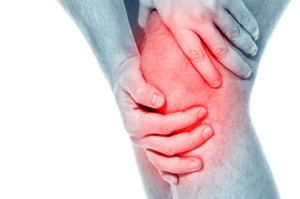Runners knee is common among runners and other athletes who make frequent use of the knee, such as people who frequently walk or jump. The term refers to a number of overuse injuries that affect the front of the knee, and is also known as patellofemoral syndrome. Below, we will take a look at some of the most common symptoms of runners knee, as well as how this painful condition can be treated.
Most Common Symptoms of Runners Knee
Because runners knee can vary in its nature and severity, the symptoms of runners knee also vary significantly. The most common symptoms include:
- Pain around or behind the kneecap, especially the upper portion where the kneecap (patella) meets the thighbone (femur)
- Pain when bending the knee, such as when walking, running, kneeling, or squatting
- Pain that gets worse when going downstairs or downhill
- Swelling around the knee
- A popping or grinding sensation in the knee when walking
The symptoms of runners knee can be similar to the symptoms of other conditions affecting the knee, so the physician will use diagnostic testing along with a physical exam to determine the exact nature of your injury. X-ray, MRI, and CT scans are all commonly used to diagnose the condition.
Treatment for Runners Knee
Treatment for runners knee depends on the severity of the condition and how the patient has responded to pat treatments. In many cases, at-home treatments can be sufficient to bring down inflammation and allow the knee to heal. Other times, more intensive treatment is required. Potential treatments include:
- RICE – When you have symptoms of knee pain, you can use the RICE method – Rest, Ice, Compress, and Elevate. For a period of several days, avoid using the knee as much as possible, ice the knee for 20 minutes every several hours, use an elastic bandage when walking, and elevate the knee on a pillow at about the level of the chest when lying down. If symptoms persist, further treatment may be needed.
- Anti-inflammatory medication – Non-steroidal ant-inflammatory drugs (NSAIDs) like Aleve and Advil can alleviate pain and swelling. Do not take these medications on a long-term basis unless your doctor instructs you to do so.
- Physical therapy – A physical therapist can help you learn exercises to strengthen the knee, improve alignment, and restore flexibility. Physical therapy exercises should be performed on a regular basis even after the formal sessions end.
- Shoe inserts – If foot problems contributed to the runners knee, inserts to improve foot position may be recommended. The right orthotic depends on the particular patient’s foot.
- Surgery – In severe cases, the knee may be unable to recover without surgery. Surgery may be used to repair cartilage or fix the alignment of the knee.
Dr. Howard Marans would be happy to meet with you about treatment for your runners knee. To schedule your consultation today, please click below and enter your information or call OC Orthopedic at (714) 979-8981.


